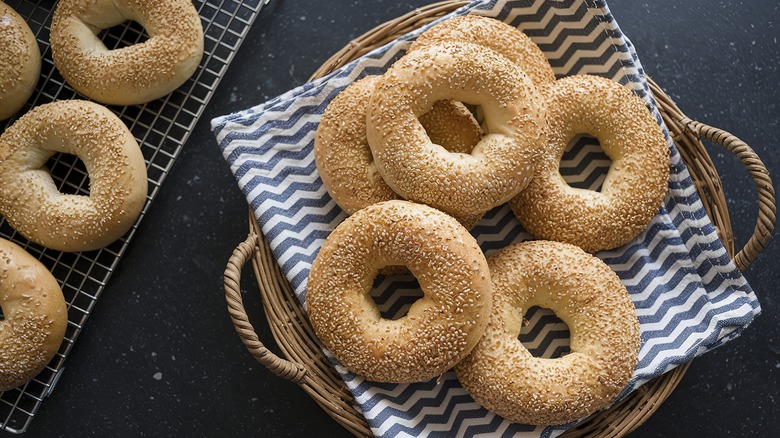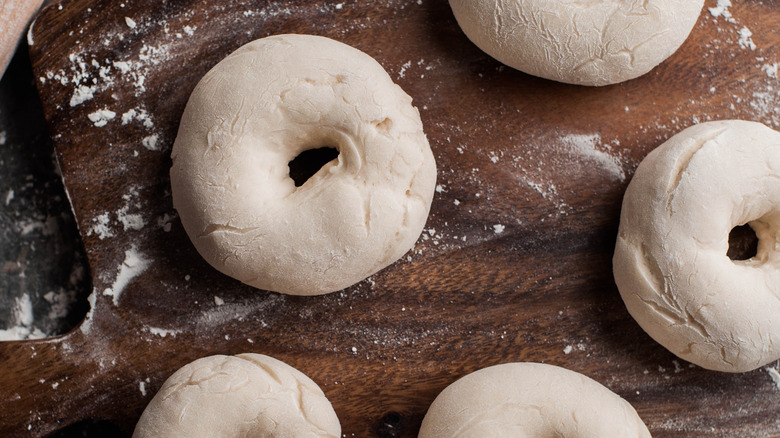Why Your Homemade Bagels Are Too Dense And The Easy Way To Fix Them
Breanne Kostyk is a bagel-baking maverick. Her New Orleans-based shop, Flour Moon Bagels, has earned some of the highest praise bagels can get outside of New York. Bon Appetit and The New Yorker both claim that her bagels are as good as anything you can get in the Big Apple. That's not an easy feat. If you've tried baking bagels at home, you've probably discovered that the soft-yet-chewy texture of a good New York bagel is tough to recreate. Kostyk gave The Takeout some tips on avoiding the dense, dry texture that plagues bad bagels.
"Bagels can be dense for several reasons," says Kostyk. One common culprit? Underdeveloped gluten. To develop strong, stretchy gluten, you'll need to work the dough. "Bagels require a strong gluten bond for the classic, chewy texture," she explains. "You really want to fully knead your dough. You want to make sure your dough mixes to the point of being very smooth and supple."
Time, temperature, and hydration are just as important as kneading the dough. "If the dough is very tough and hard to work with, it may be lacking hydration," Kostyk says. "It may also not be rested or proofed enough." At Flour Moon Bagels, the dough goes through a cold fermentation process that lasts 18 hours.
Adjust your bagel baking process to the weather
According to Kostyk, bagels are also sensitive to temperature. Sometimes that's in your control, sometimes it isn't. "Ambient temperatures, as well as the temperature of the bulk refrigeration matters," she says. "If your refrigeration is too cold, it can retard the dough too much and your yeast or sourdough may not yield the fluffiness you are expecting."
While you can turn down your refrigerator, you can't change the weather. According to Kostyk, seasonal changes have a big impact on bagels. Bagels love a hot, humid climate — a fact which helps give her shop an advantage over New York. "In New Orleans, we have become accustomed to warmer temperatures and high humidity," she explains. Not all recipes are written with NOLA temperatures in mind, though. "It works in our favor, but may not for other recipes."
Kostyk has to adapt her recipes for colder weather. "Winter is an entirely different ballgame," she says. "It requires warmer water in the dough and longer proofing at room temperature. It takes adjusting water and flour levels with humidity changes." There's no universal formula for these adjustments; it takes trial and error. "That learning process comes over time," she explains.
You might have to make a lot of bagels before you catch on, but that's not such a bad thing. A sub-par bagel is still a bagel. Smother them with cream cheese or use your air fryer to turn them into bagel chips. Then take some notes, and try, try again.

